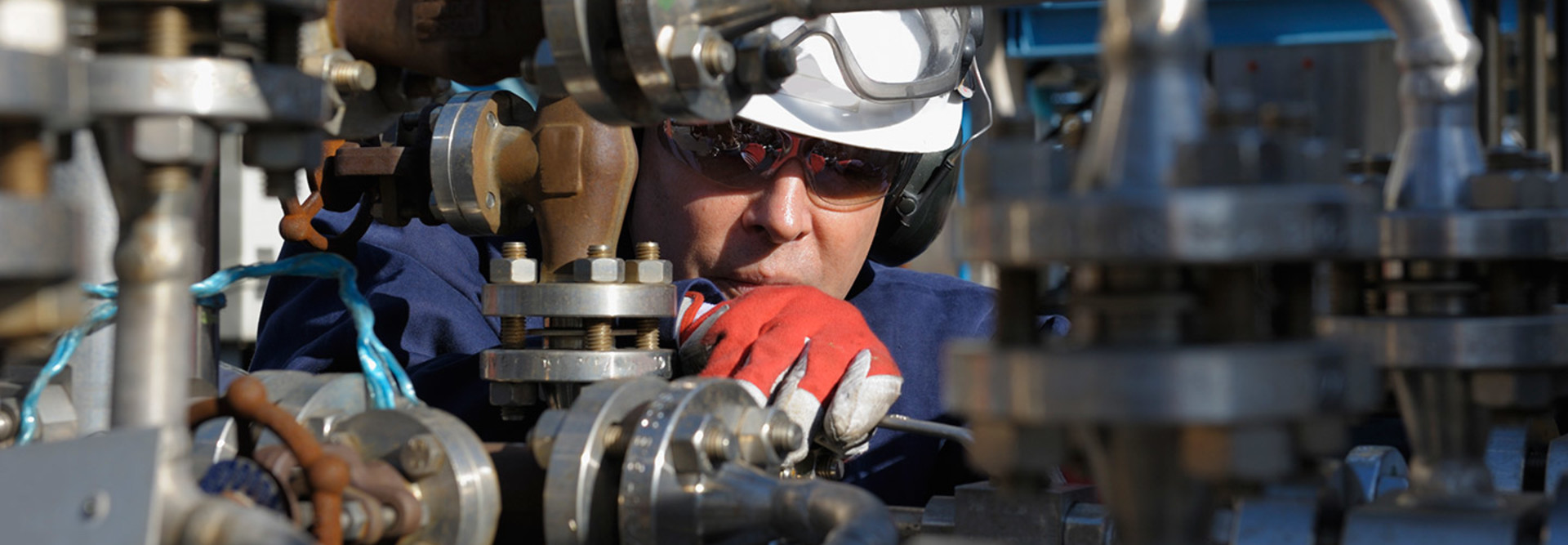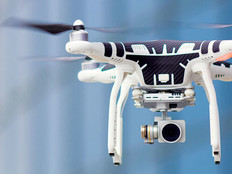Is Augmented Reality for Industrial Workers About to Take Off?
Augmented reality isn’t just for Pokémon Go.
As AR technology matures, it’s increasingly being targeted at the energy and utilities market, as well as manufacturing and other industrial use cases. As a result, new AR hardware is being introduced specifically for the industrial market.
Meanwhile, last week, technology groups backed by key players in manufacturing and IT came together to announce the creation of the first hardware and software standards for AR in industrial settings. With AR, digital information is brought into a user’s field of view and overlaid onto the real world, which they observe through glasses, a headset or a mobile device.
All of this is creating a sense of momentum around AR. Market research firm ABI Research said in February that it expects AR in enterprise applications “will hit an inflection point in 2018, with smart glass shipments growing to 28 million in 2021,” with a 227 percent compound annual growth rate. ABI expects total AR market revenues —across devices, platforms and licensing — to reach $96 billion in 2021.
“2016 was a year of discovery for AR, with the industry focusing on initial [return on investment] metrics,” Eric Abbruzzese, a senior analyst at ABI, said in a statement. “Pilot phases will continue into 2017, with early adopters moving to more substantial deployments. New AR customers will be excited by positive performance indicators across the market, with the promise of increased workforce efficiency and error reduction.”
New AR Glasses for Industrial Use
Earlier this month, Osterhout Design Group, a leading manufacturer of smart glasses integrating augmented, virtual and mixed reality technologies, released a new version of its glasses dubbed R-7HL (HL for “hazardous location”).
The glasses are a ruggedized version of ODG’s existing R-7 glasses. They will begin shipping by the end of the second quarter.
ODG CEO Ralph Osterhout said in a statement that the new AR glasses are aimed at professionals in oil exploration and production, energy, mining, utilities, chemical production and pharmaceuticals. According to TechCrunch, ODG says about 50 percent of its existing client base is in industries the new headset would best serve.
The R-7HL glasses, Osterhout said, enable “heads-up, hands-free checklists, guided assistance tools and manuals, remote assistance support, and the delivery of real time notifications and alerts. It keeps users safer and helps them be more efficient and will further help to change the way work is done.”
The R-7HL is built with reinforced and protective goggle-like eye housing; meets Military Standard 810G certification for drop, shock, vibration, low pressure and temperature extremes; and meets the ANSI Z87.1 dustproof and splashproof certification.
“We’ve taken the R-7 and its features and made another version of it for hazardous locations,” said ODG Chief Operating Officer Pete Jameson, according to GamesBeat. “It’s a ruggedization of our technology.”
Creating Hardware and Software Standards for AR
Segments of the tech industry often don’t achieve wide-scale adoption until standards are created. Those standards are coming for industrial AR.
Last week, UI Labs and the Augmented Reality for Enterprise Alliance (AREA) announced the release of AR hardware and software functional requirements guidelines, which will help AR technology companies develop products for industrial users. UI Labs is an innovation accelerator that brings together universities and industry, and AREA is a kind of clearinghouse that supports the development and adoption of AR in the enterprise.
“These AR functional requirements documents will lead to technology that improves the performance and efficiency for manufacturers in a number of areas, including employee training and safety; factory floor and field services operations; machine assembly, inspection and repair; manufacturing space and product design; and much more,” the groups said in a statement.
The guidelines address hardware features such as battery life, connectivity, field of view, onboard storage, onboard operating systems, environmental aspects, inputs/outputs and safety. They also cover software functions such as authoring, AR content, creating 3D content, deployment of AR content and Internet of Things.
Lockheed Martin, Caterpillar and Procter & Gamble initiated the guidelines development process as part of a project through the Digital Manufacturing and Design Innovation Institute, a UI Labs collaboration. However, many other tech companies, AR providers, universities and government agencies contributed to the requirements at a workshop in March, including Microsoft, General Electric, Rolls-Royce, Dow Chemical, Intel, the U.S. Air Force, Stanley Black & Decker, Johnson & Johnson, Newport News Shipbuilding, Boeing, Northrop Grumman, Daqri, Upskill, Optech4D, Scope AR, iQagent, Six15, RealWear and others.
“For the first time, industry — both suppliers and users in the AR space — will have access to a benchmark set of requirements that will help them develop a roadmap and source, select, evaluate and deploy augmented reality solutions,” Mark Sage, executive director of AREA, said in a statement. “These functional requirements will be used to help continue the development of the AR ecosystem, and AREA is looking forward to communicating and driving future changes.”









